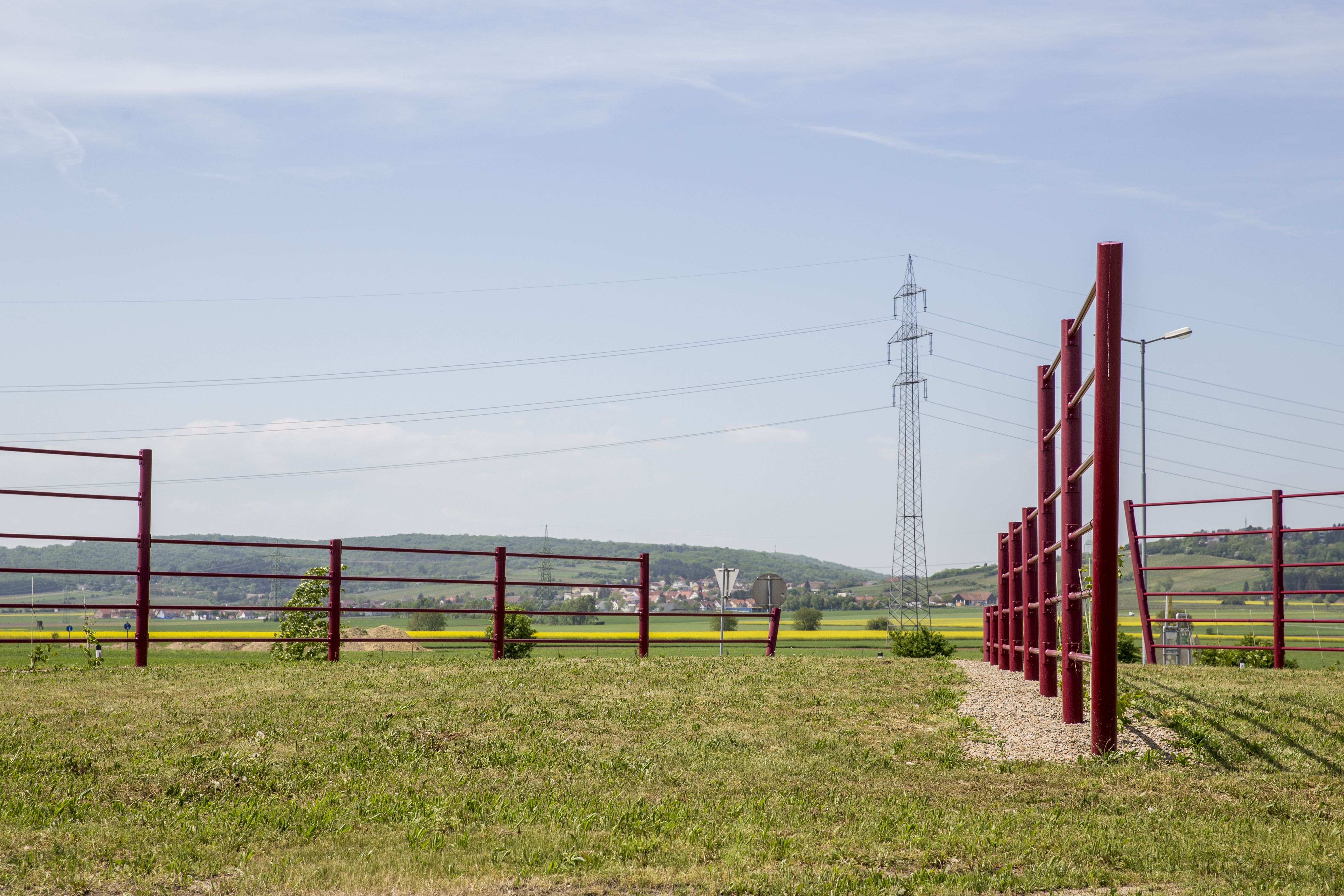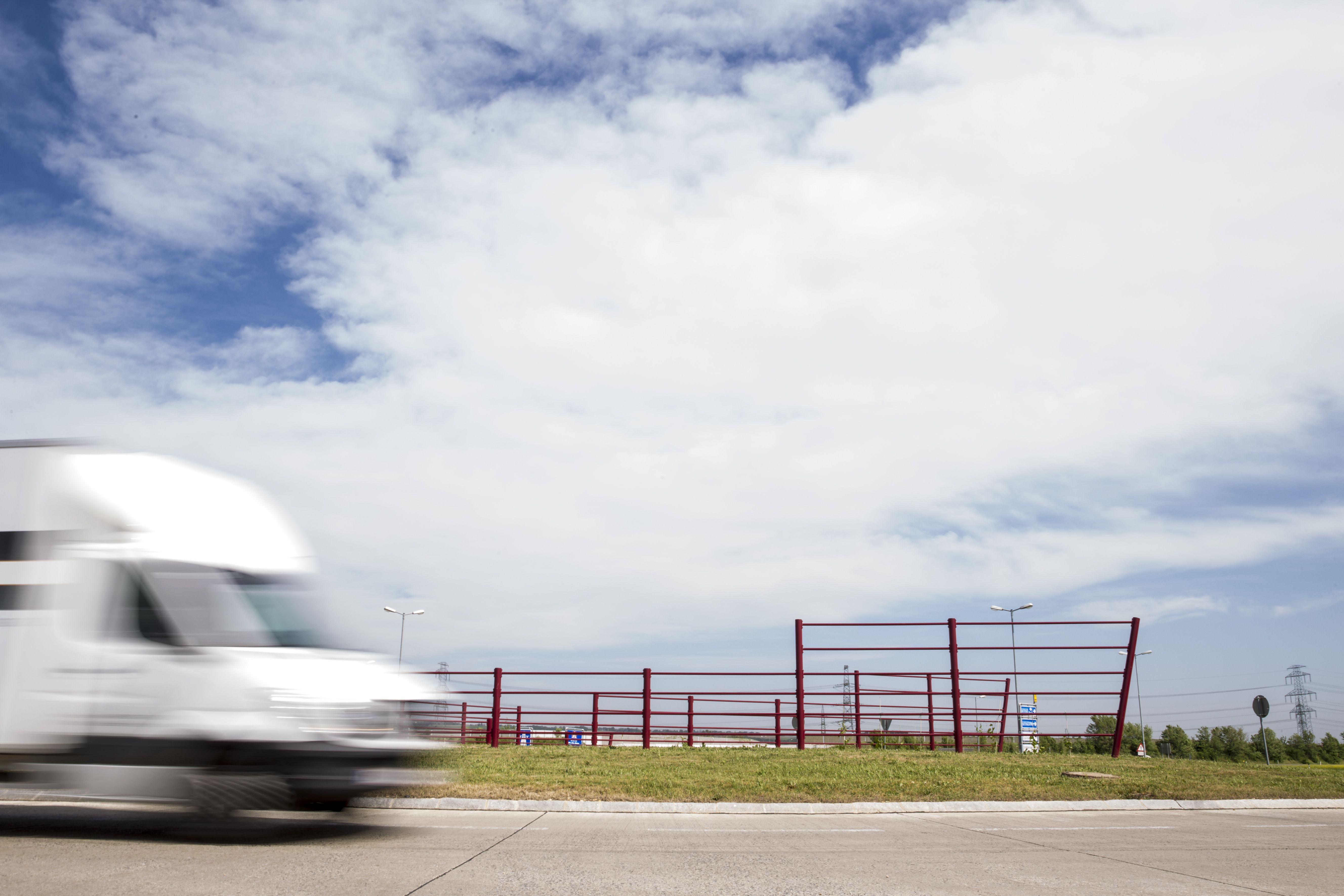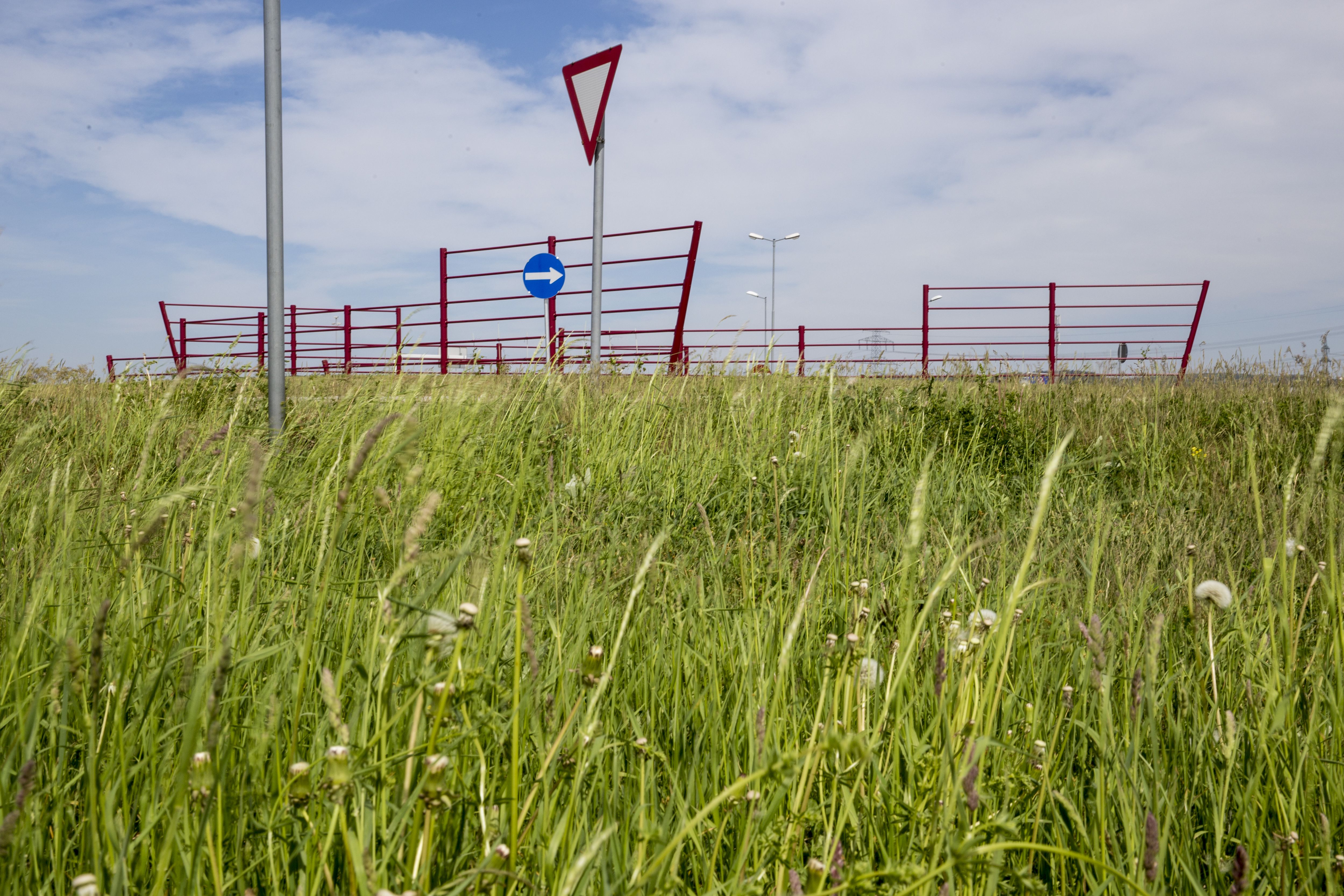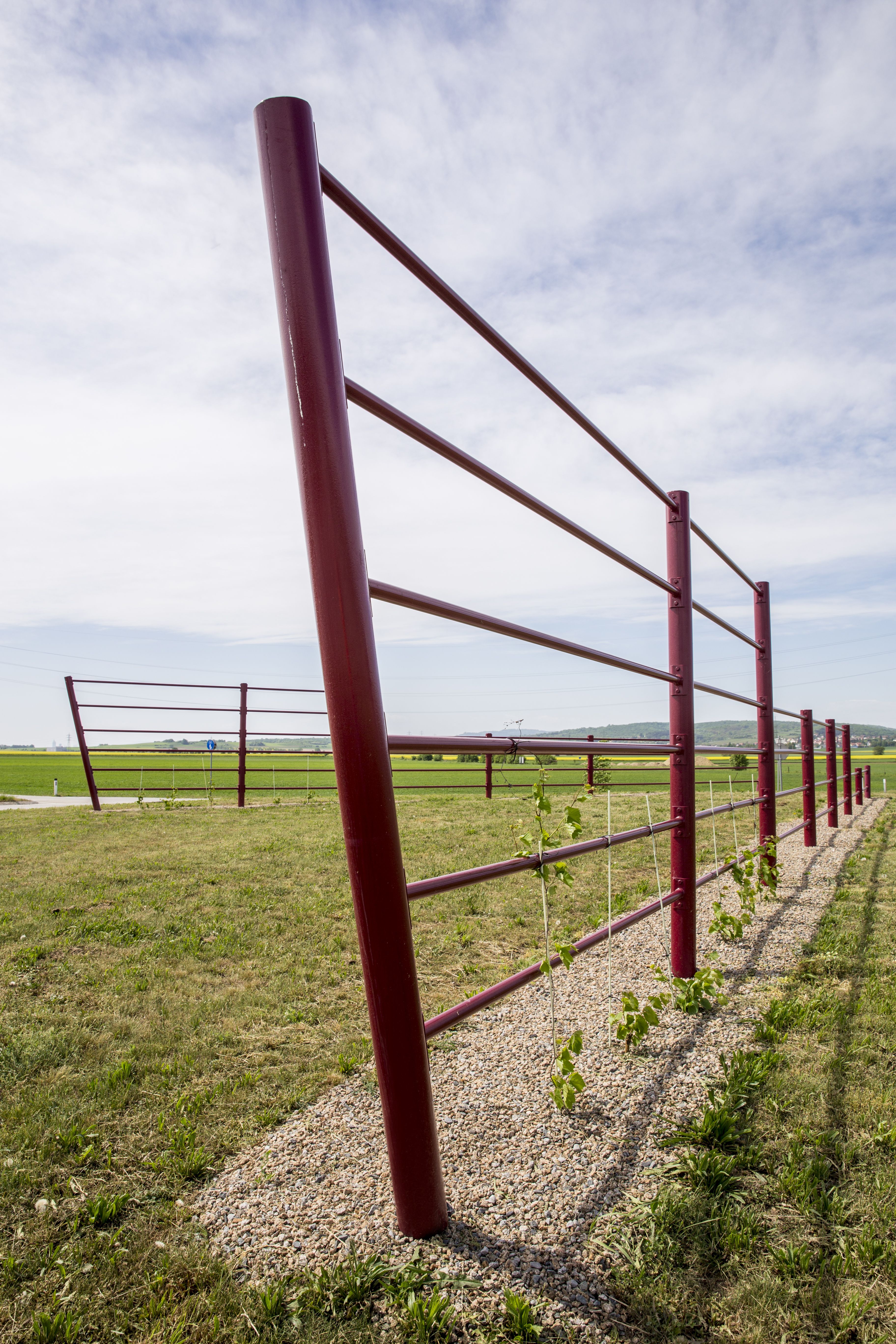Auböck + Kárász
:
Wein in Sicht
Back
Information
In their design for a traffic circle in the town of Hagenbrunn, the landscape architects Auböck/Karasz fulfilled the town’s wish of highlighting the essential role of wine for the community. They transformed the island in the traffic circle into a tiny vineyard, perhaps the smallest that ever existed. Such a small vineyard should not be possible in today’s growing economization, not least because it is extremely difficult to reach. Through its exposed location, it presents itself to beholders like a kind of exhibition object. It can also be interpreted as a kind of “trademark” for the community, a “living logo.” This wine trademark is undermined, however, by the fact that the wine branches must form themselves to the aesthetically dominant construction of the trellises, thus transforming the trellises into the real sculpture, while the wine plants they support retreat into the background (at least for the moment). The shape of the trellises is based on the patte d’oie motif from Baroque garden design. By placing this Baroque motif on an island in a traffic circle – a purely functional structure, far removed from grand representative gestures – the landscape architects enhance the absurdity of this artwork.
The work “Wein in Sicht” evokes a myriad of associations, ranging from Gut (referring to the German word Weingut for “vineyard,” but also means “good”), “Hilfe” (from Rankhilfe , which means “trellis”), and “Erziehung” (from Reberziehung , which means “vine training”). Auböck/Karasz use these associations to pose important questions about our society and future. How much do we bow down to structures that want to “train” us, and where do we find the freedom to overcome them? How does nature react to the necessary technical and constructive methods of supporting agricultural growth today that often get out of hand? How can we bring back the meaning of “good” as the “common good,” and not as maximized profit? As we drive around the minimal space of the traffic island, this work lets us see the potential of a “new world in sight.”
(Text: Barbara Holub, Translation: Michelle Miles)





